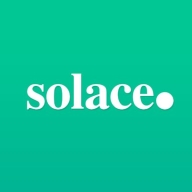

Apache Kafka and PubSub+ Platform compete in the data streaming solutions category. Apache Kafka gains an advantage with its open-source model, high scalability, and integration capabilities, while PubSub+ Platform excels in protocol support and cloud integration.
Features: Apache Kafka benefits from its open-source nature, allowing high scalability with features like replication and partitioning. Its integration with tools like Apache Spark enhances analytical processing. Users appreciate its fault tolerance and horizontal scalability. PubSub+ Platform supports various protocols and offers flexibility with topic-based subscriptions. Its standout features include an advanced event mesh capability, accommodating seamless data flow in hybrid cloud environments.
Room for Improvement: Apache Kafka could improve with a more intuitive UI for configuration and monitoring. Users also suggest streamlining the deployment process and enhancing support tools. Dependency on ZooKeeper and managing multiple consumers are noted concerns. PubSub+ Platform is encouraged to develop dynamic topic hierarchy and event catalog features further. Users also seek improved ease of administration and better observability relative to event handling.
Ease of Deployment and Customer Service: Apache Kafka is widely deployed in on-premises and hybrid environments but requires significant expertise for complex deployments. The community-driven customer support can result in variable experiences. PubSub+ Platform offers structured support, which provides direct assistance, and is known for its adaptability to various cloud environments, making it attractive for scalable messaging solutions.
Pricing and ROI: As an open-source solution, Apache Kafka has no licensing fees, appealing to cost-conscious organizations, though expertise is necessary for maintenance. This setup provides substantial ROI when effectively integrated into custom data processing solutions. PubSub+ Platform involves upfront licensing expenses but is justified by its robust feature set and easy integration within enterprise environments. Its pricing is deemed reasonable against its capabilities, supporting varying deployment models and business scaling.
I want to receive good technical support, which I only need once a month or every six months, and the experience has been unsatisfactory.
There is plenty of community support available online.
The Apache community provides support for the open-source version.
Customers have not faced issues with user growth or data streaming needs.
Apache Kafka is stable.
This feature of Apache Kafka has helped enhance our system stability when handling high volume data.
The performance angle is critical, and while it works in milliseconds, the goal is to move towards microseconds.
We are always trying to find the best configs, which is a challenge.
A more user-friendly interface and better management consoles with improved documentation could be beneficial.
It was as impressive as Kafka, better than Kafka based on my experience working on the Solace and Kafka white paper.
The open-source version of Apache Kafka results in minimal costs, mainly linked to accessing documentation and limited support.
Its pricing is reasonable.
Apache Kafka is effective when dealing with large volumes of data flowing at high speeds, requiring real-time processing.
Apache Kafka is particularly valuable for managing high levels of transactions.
The impact of Apache Kafka's scalability features on my organization and data processing capabilities depends on how many messages each company wants to receive.
The solution's ability to decouple message producers and consumers allows us to have high cohesion and low coupling, making it an excellent solution for that purpose.
| Product | Market Share (%) |
|---|---|
| Apache Kafka | 3.7% |
| PubSub+ Platform | 3.0% |
| Other | 93.3% |


| Company Size | Count |
|---|---|
| Small Business | 32 |
| Midsize Enterprise | 18 |
| Large Enterprise | 47 |
| Company Size | Count |
|---|---|
| Small Business | 3 |
| Midsize Enterprise | 1 |
| Large Enterprise | 12 |
Apache Kafka is an open-source distributed streaming platform that serves as a central hub for handling real-time data streams. It allows efficient publishing, subscribing, and processing of data from various sources like applications, servers, and sensors.
Kafka's core benefits include high scalability for big data pipelines, fault tolerance ensuring continuous operation despite node failures, low latency for real-time applications, and decoupling of data producers from consumers.
Key features include topics for organizing data streams, producers for publishing data, consumers for subscribing to data, brokers for managing clusters, and connectors for easy integration with various data sources.
Large organizations use Kafka for real-time analytics, log aggregation, fraud detection, IoT data processing, and facilitating communication between microservices.
PubSub+ Platform is designed for real-time message publishing and outstanding interoperability. With features like intuitive administration and topic filtering, it offers both stability and high performance for scalable deployments across diverse scenarios.
PubSub+ Platform enhances data integration with its event mesh and seamless protocol compatibility, providing a comprehensive solution for organizations tracking shipments, generating reports, and managing transactions. Its granular topic filtering and WAN optimization ensure high utility in event-driven applications and cloud deployments. Users highlight the platform's intuitive administration and ease of management, though some seek improved integration with third-party tools and enhanced observability. Concerns include scalability for large payloads and training resource availability. Despite its interface complexity, PubSub+ remains valuable for trading and market data distribution.
What are the key features of PubSub+ Platform?PubSub+ Platform is widely implemented for asynchronous messaging in industries like finance for trading and market data, logistics for shipment tracking, and tech operations management. It enables companies to modernize applications while ensuring data accuracy and efficiency across global systems.
We monitor all Streaming Analytics reviews to prevent fraudulent reviews and keep review quality high. We do not post reviews by company employees or direct competitors. We validate each review for authenticity via cross-reference with LinkedIn, and personal follow-up with the reviewer when necessary.